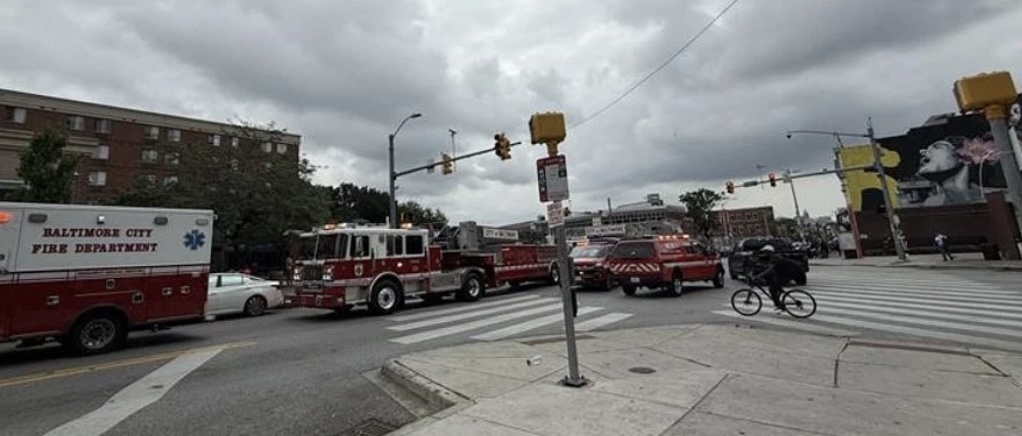UPDATE, VERMONT: CLEAR MEASURE OF A WORSENING OPIOID CRISIS AS EXPERT APPROACHES FUEL HIGH-RISK OPIOID USE AND OVERDOSE
While Narcan saves reduce OD deaths, evidence of a worsening crisis inescapable by persistent surge in nonfatal overdoses = high-risk opioid use = expert treatment failure
by Clark Miller
Published October 17, 2025
Despite instances of localized community opposition, Vermont has leaned into expert, gold standard medical treatments including increasing programs to dispense the substitute opioid methadone, determined to provide more of the “miracle molecule” to even more than the 4000 Vermonters receiving methadone as of this year.
The Vermont Department of Health wants to set up three new methadone clinics across the state to make it easier for patients with substance use disorder to access treatment.
Vermont Deputy Health Commissioner Kelly Dougherty says the state wants to use some of its opioid settlement funds to set up the clinics in parts of the state where patients now have to drive 45 minutes or more to receive treatment.
“The idea is to make it more convenient for people to be able to get their medication without having to travel as far,” Dougherty said. “Oftentimes, particularly in the early stages of treatment, people have to go and get their methadone every day. So if you factor in travel, and you’re trying to work, it can be a huge burden.”
It’s not just more clinics dispensing methadone that have and will make things easier for Vermont methadone users.
As described in this previous post on expert approaches to Vermont’s high-risk opioid use problem –
Vermont is among a majority of states that adopted federal loosening of take-home doses and other standards for methadone dispensing, and was granted less restrictive safety standards as were all states for buprenorphine prescribing and training requirements for prescribers.

It worked! But with hidden, increasingly exposed, costs.
BELOW –
Buried in a Vermont local news report this year, direct valid measure of a worsening crisis: “However, non-fatal overdoses have risen.”
From JAMA, an illustration that Vermont is one of a minority or few states that increased methadone provision over past years by relaxing longstanding safety standards.
How have opioid trends played out over the period of relaxed safety standards beginning in 2020? Here are the data for select years, from this report –
For methadone-involved opioid overdose deaths:
2015 2016 2017 2018 2019 2020 2021 2022 2023
7 14 12 11 9 18 17 29 19
One could construct a line graph, but I don’t think that’s necessary.
And for buprenorphine-involved OD deaths:
2015 2016 2017 2018 2019 2020 2021 2022 2023
2 1 0 6 3 2 2 5 14
Those apparent trends and changes associated with more reckless prescribing and dispensing of America’s gold standard opioid treatment medications are not anomalous, are instead predicted and consistent with outcomes in other locales.
As fully explored in this recent post, additional states or regions illustrating the same lethal, predictable outcomes include:
Ohio
Arizona
Colorado
Washington DC, and
Ontario, Canada
In Vermont as in other locations, those increases in MAT opioid-involved deaths occurred despite concurrent increases over the time period in use of naloxone to reverse potentially lethal overdoses.
And while the Narcan moderating effect appeared to slow overdose deaths for other, non-MAT opioids –

But let’s get to the point.
Described in this Burlington Free Press report.
In Vermont, more than 100 people die every year from opiate overdoses. Hundreds of people in Chittenden County suffer non-fatal opiate overdoses every year. Public consumption of drugs continues to make members of the community feel unsafe.
Burlington leaders have been working to combat this issue that seems to be on the forefront of everyone’s minds, even as while overdose deaths are declining in recent years. Various initiatives have been started, along with the announcement of a drug overdose center coming to the downtown area soon.
But the problem persists. The Burlington Police and Fire departments, along with the city, recently shared the 2024 data on substance use disorder, comparing it to the previous seven years.
The CDC reported that fatal overdoses in the United States decreased 17% between July 2023 and July 2024. Chittenden County saw a similar trend, with fatal overdoses dropping 22% between September 2023 and September 2024. However, non-fatal overdoses have risen.
Non-fatal overdoses reported in 2017 – the earliest record – were 70. A few years later in 2021 there [were] 145 overdoses. 2023 reported 430, and 2024 jumped to 585 non-fatal overdoses.
[emphasis added]
But we know, with certainty, that those counts of nonfatal opioid overdoses are large underestimates, as in Vermont as elsewhere, intensive community-based naloxone campaigns have shifted location of Narcan reversals of potentially lethal ODs to community settings, where they increasingly go unreported. That’s explained in numerous posts here. And it’s described in this NPR September 2024 news piece, specifically by Vermont high-risk opioid users, who report what is being reported consistently in reports from across the U.S. – that while opioid OD deaths are declining due to drmatic increases in use of naloxone on the streets, other community locations, the high-risk opioid use that has neccessitated those desperate naloxone campaigns is, if anything, worsening.
“Some of us have learned to deal with the overdoses a lot better,” said Kevin Donaldson, who uses fentanyl and xylazine on the street in Burlington, Vermont.
According to Donaldson, many people using fentanyl now carry naloxone, a medication that reverses most opioid overdoses. He said his friends also use street drugs with others nearby, ready to offer aid and support when overdoses occur.
He believes these changes – a response to the increasingly toxic street drug supply – mean more people like himself are surviving. …
Eric Breeyear, who lives in a recovery shelter called Good Samaritan Haven in Barre, Vermont, said he was given naloxone repeatedly after experiencing fentanyl overdoses. …
He told NPR there is “probably a 100 percent chance” he would have died without the medical help that is now far more widely available.
“I’m happy people’s lives are being saved, but on every street I see somebody in the middle of an overdose that could potentially be fatal,” Breeyear said.
The intro for this 2024 NPR radio interview seems apt.
A decade after Vermont announced an effort to address the state’s opioid epidemic, fatal overdoses have quadrupled, and the crisis is more visible because more people are living on the streets.
As described in the interview, what followed over that decade was a focused investment in America’s expert gold standard medical and traditional “addiction treatment” approaches, “a multipoint plan largely focused on expanding the state’s recovery centers and increasing access to addiction treatment” similar to the all-in approach leaders and experts implemented for Baltimore.
And with similar, entirely predictable results.

Just as high-risk opioid users on the streets in Burlington and in Barre, Vermont see a worsening crisis, just as surveyed residents of Philadelphia can see, just as direct service providers in Columbus see, so observe those in Vermont.
Tracie Hauck, executive director of the drug recovery group Turning Point Center of Rutland, said focusing on death data alone could be misleading.
“From what I see in our community, things aren’t any better,” she said. “Crime is picking up again. You’re seeing people that are struggling health wise and have no place to live and are using substances.”
Hauck observes in another news piece from May of 2025,
“When you see that there’s less deaths, then people just naturally think, ‘Oh, it’s getting better,’” she said. “It’s not.”
Meanwhile?
Here’s a celebratory news headline from Burlington –

BURLINGTON, Vt. (WCAX) – The Burlington Fire Department is implementing what’s called the ‘PREVENT Initiative,’ to combat the opioid crisis in the Queen City.
It stands for Prehospital Vermont EMS Buprenorphine Treatment. The program will allow paramedics to administer buprenorphine after an overdose, a medication is critical for treating opioid use disorder. …
Crews will also be able to refer patients to local recovery programs. The department will be the first in the nation to roll this out.
Officials say this is a monumental occasion for Burlington.
“This initiative marks a turning point in our community’s fight against the opioid epidemic,” EMS Chief McCombie said. “By enabling AEMTs and Paramedics to administer buprenorphine, we are bridging a critical gap in care and paving the way for healthier outcomes for the patients we serve. This is a significant day for Burlington, Vermont, and EMS nationwide.”
The “first in nation’ to have emergency responders hook up high-risk opioid users with the common street currency for fentanyl, driving the worsening crisis?
Maybe not first, but able to predict the outcomes.










